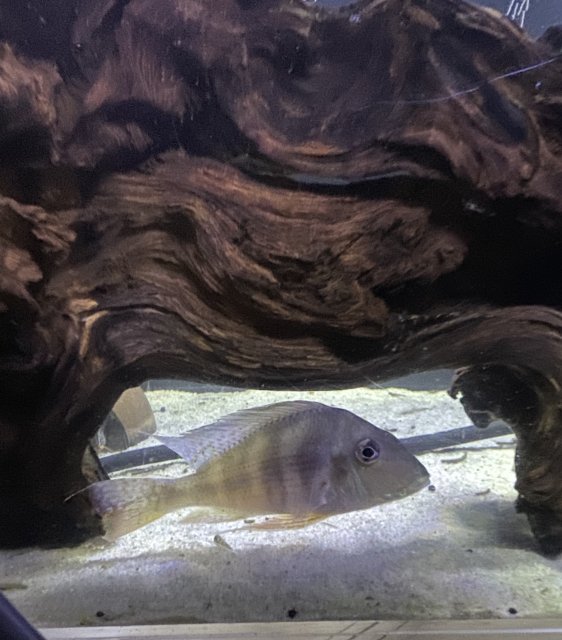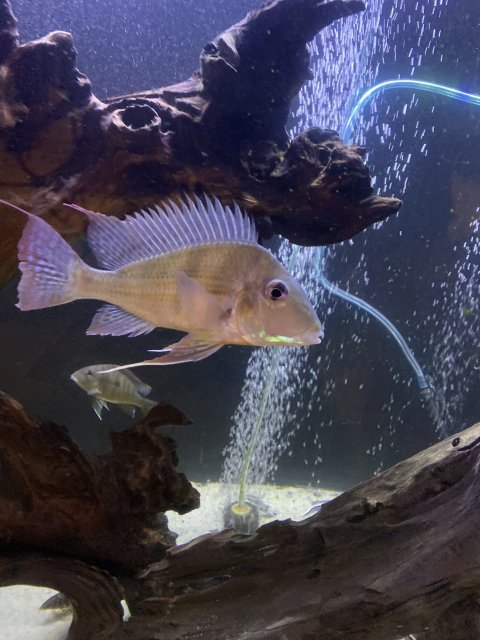Here (below) are a couple a paragraphs from the book South American Eartheaters, by Weidner, about surinamensis, and other lookalike species.
" From an aquarists viewpoint, characters which can be used to differentiate this species (surinamensis)from other members of the genus include the absence of dark markings on the head (contrast G. proximus, G argyrostictus, G.branchybranchus, G. harrier, G. taeniopareius, G. grammepareius): the always visible lateral spot encompassing several scales, which in adults and/or depending on mood may become pale but is still clearly visible asa light spot (contrast G. megasema, and G proximus, which exhibit an obviously larger lateral spot, and G altifrons, which has no lateral spot or only a small one): the irregular spotting of the central part of the caudal (contrastG brokopondo, with spots arranged vertical rows, and G megasema, with a horizontal stripe pattern the tail): plus the deep-bodied shape (contrast G.camopiensis, G harrier)."
He also writes...
"The most important criterion for identifying G surinamensis is not so much the body and coloration, but the locality, as current wisdom is that only specimens from Surinam and French Guiana should be assigned to this species."





